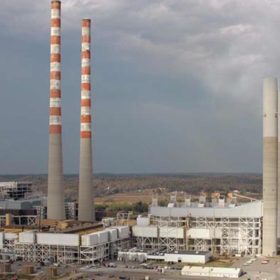Energy storage is ramping up at the grid scale to meet an energy mix increasingly dominated by renewables. The U.S. set a new quarterly record for deployment in Q2 this year, installing 1.7 GW / 5.6 GWh of storage, for an average of 3.3 hours of duration.
This relatively young industry is expected to continue to achieve new quarterly highs for deployment for years to come. Over 66 GW of energy storage is expected to come online through 2027, 83% of which will be at the grid-scale. How will this goal be achieved?
These questions were addressed in the fourth session at the pv magazine Roundtables US 2023, we were joined by four experts in utility-scale energy storage and solar development. The panel included Darleen DeRosa, vice president of policy and regulatory affairs, Stem Incorporated; George Hershman, chief executive officer of SOLV Energy; Vanessa Witte, senior research analyst, Wood Mackenzie, and Gabe Murtagh, director of markets and technology for the Long Duration Energy Storage Council.
IRA and new markets
The conversation began with a reflection on the Inflation Reduction Act (IRA) of 2022, which was passed just over a year ago. Hershman highlighted the fact that the IRA included an investment tax credit for standalone energy storage projects, a first for storage. This enables much-needed energy storage projects in congested urban areas, which have suitable open spaces for storage, but less room for a co-located solar array.
DeRosa celebrated the direct pay provision of the IRA, which enables tax-exempt entities to use the investment tax credit as a payment against tax liability, and any remaining balance can be refunded as a cash payment by these entities. This is particularly beneficial for non-profit entities like rural electric co-ops, said DeRosa, which were otherwise unable to participate in the tax credit market pre-IRA.
Witte shared that mining and manufacturing for energy storage has ramped up massively this year, and prices have declined throughout the year as supplies frees up. Wood Mackenzie projects that there will be an oversupply of both manufacturing and lithium carbonate supply by the end of 2023, providing more much-needed price relief for storage.
Despite these cost reductions, Witte said that the IRA has boosted demand for other related electrical components, which by effect has caused some sharp increases in price. Medium- and high-voltage equipment, circuitry, transformers, switch gears and GSUs have all gone up in price considerably this year, and procurement lead times have stretched out as demand rises.
Furthermore, the prevailing wage requirement is increasing costs, some of which are passed on to the developer. Despite these increases, Witte said total system costs have decreased, and she expects this trend to continue.
Roles for energy storage
Energy storage serves a multitude of roles from baseload energy storage and dispatch, peak demand response, demand balancing, and more. DeRosa said it is a cliché in the industry that energy storage is the “Swiss army knife” of the energy industry, but it holds true. Energy storage is sought as a flexible technology.
Murtagh echoed earlier statements that the standalone credit for energy storage is an important change for the market. While storage used to have to be directly tied to solar to receive a tax credit, it is no longer the case.
This may lead some to consider whether storage would still be supporting rapid decarbonization. Murtagh argued that it does, even if the grid is storing natural gas-fired electricity. By storing normal, marginal cost baseload natural gas generation while solar is in peak production, and dispatching it during peak demand hours later in the day, the system avoids using high-demand based natural gas peaker plants. These plants are highly inefficient, said Murtagh, and unlocking standalone storage will be instrumental in displacing the high-carbon and wasteful peaker plant model.
Witte said that energy storage projects are also being increasingly targeted by utilities in their integrated resource plans as a flexible tool with strong rates of return for revenues. Grid congestion is an increasingly difficult challenge for utilities, and energy storage often offers a much better rate of return than building more transmission lines in the area. Whether it is in urban areas, rural and remote areas, or other regional congestion constraints, energy storage can be strategically placed as a ready-made solution to the costly problem of grid congestion.
This and other topics were addressed in the pv magazine Roundtables US 2023 session, which can be viewed in its entirety below.
This content is protected by copyright and may not be reused. If you want to cooperate with us and would like to reuse some of our content, please contact: editors@pv-magazine.com.








By submitting this form you agree to pv magazine using your data for the purposes of publishing your comment.
Your personal data will only be disclosed or otherwise transmitted to third parties for the purposes of spam filtering or if this is necessary for technical maintenance of the website. Any other transfer to third parties will not take place unless this is justified on the basis of applicable data protection regulations or if pv magazine is legally obliged to do so.
You may revoke this consent at any time with effect for the future, in which case your personal data will be deleted immediately. Otherwise, your data will be deleted if pv magazine has processed your request or the purpose of data storage is fulfilled.
Further information on data privacy can be found in our Data Protection Policy.